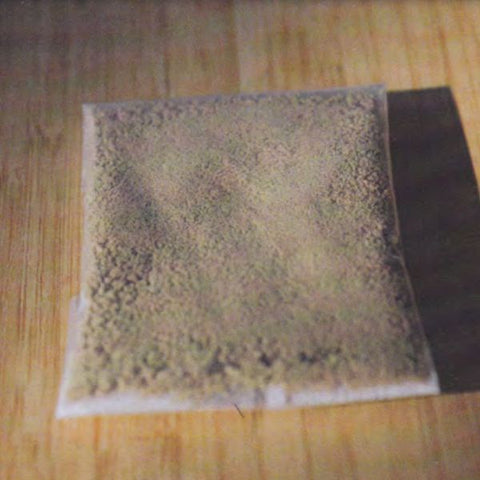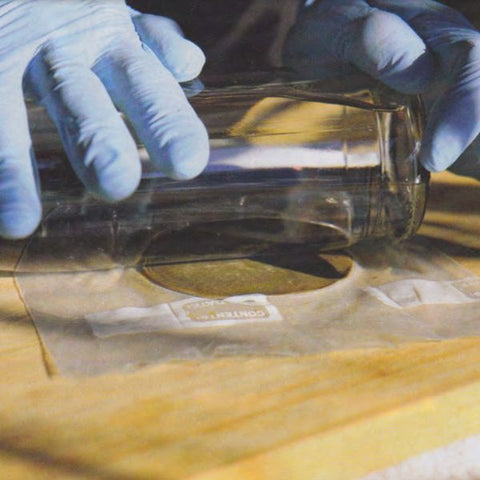The Lost Art of the Hashishin: Pressing, Curing, and Aging


Frenchy Cannoli
Frenchy Cannoli was a California-based teacher, consultant, artisan, & activist dedicated to the production & appreciation of traditional cannabis concentrates..
Traditions are the reflection of the power of human observation and the cornerstone of evolution, those that stand the test of time should be evaluated scientifically to show that the custom is in fact more than just old meaningless rituals. It is the best practice for the process.
I believe the technique of pressing, curing, and aging hashish falls into this category.
Before going further, I would like to offer a definition of the word hashish for our discussion:
a psychoactive drug made from sieving the resin glands of the dried female cannabis flowers and from pressing them with a source of heat.
From Afghanistan to Morocco, you will commonly find local hashish smokers actively pressing resin glands before smoking. The various pressing techniques applied around the world are all focused on enhancing as much as preserving potency, original aromas, original aromas and flavors. Hashish quality has been defined by its smell and tastes since the dawn of time and science is discovering today, the importance of terpenes, the medical value of terpenes, and aromatherapy is well documented. But the terpenes of the cannabis plants were not scientifically studied until it was found that terpene profiles would help determine the origins of the product in custom seizures.
Prohibition became the source of groundbreaking discoveries. We learned that terpenes present in cannabis resin enhance the potency of THC and the effectiveness of the medicine as shown by the extensive research into cannabis based medicines done by G. W. Pharmaceuticals. D. P. Watson, founder of Hortapharm, a legally chartered cannabis research firm in Holland pioneered a study concluding that THC pressed stronger psychoactive. A study concluded that THC possessed stronger psychoactive properties when having a higher terpene concentration. Nathan Spalding in his article importance of terpenes analyze their ability to alter the permeability of both cell membranes and the blood brain barrier causing THC and other active cannabinoids to have a faster onset and more thorough absorption.
Traditional value of hashish quality based on smell seems to make a lot of sense considering these research studies. Curing and aging are also universally practiced. The techniques may vary but shelf life, flavor preservation, and mold free curing support the practice. The origins of these traditions may be lost in history, and their full benefits are generally unknown to most in the western cannabis industry. But I believe there is scientific foundation to these long practice cultural traditions that the Western cannabis connoisseur would benefit from exploring. Let's review the traditional hashish making process and explore the known science behind these age old beneficial traditions.
Fresh resin powder is hardly ever smoked anywhere in producing countries. And as far as history and tradition show. Most solventless concentrates specialists do not practice the art of curing the resin which would be comparable to smoking cannabis flowers just dried a big no to all connoisseurs. High quality resin needs to be cured slowly over a period of at least three months. If the flowers have not been cured before sieving the resin should be kept in an enclosed and airtight container with temperatures in the 90 degree Fahrenheit during the first three months necessary for a perfect cure. The containers traditionally used for this first curing could range from goatskin to metal boxes anything but plastic. The container is opened every other day to prevent humidity buildup.
After three months the polymerization of terpenes has transformed aromas and flavors as the cannabis resin ages and matures. We may also have to take into account that the plants are often dried in full sun, which would start a decarboxylation at the drying phase and bring the humidity to a lower level that would facilitate curing.
This maturation of the resin glands through curing is similar to the transformation happening during the flower cure. Especially when curing before trimming. A perfect curing of trichomes is mandatory to quality. Why would it apply only to flowers?
There is more to pressing resin glands than mere transportation, convenience, or marketing commodity. It is a complex operation that changes deeply the very nature of the resin glands, as well as their psychoactive and medicinal properties, an art form with 1000s of years of evolution behind it.
Pressing
The various pressing techniques used for 1000s of years always involves a source of heat.
Scientific studies show that the heat application literally activates the THC A into THC. The process of activating THCA into THC is called decarboxylation. The decarboxylation of acidic cannabinoids occurs in both daylight and darkness and seems to be a temperature dependent process. It occurs naturally with time and temperature as a function of drying and curing. The more heat the faster the occurrence within reasonable ranges. It occurs naturally when the material is burned or vaporized. However, when THCA and CBDa are converted into THC and CBD. THC is also converted into CBN at a faster rate at about 70% of the decarboxylation THC transforms into CB n at a faster rate than the conversion of THCA to THC.
It is a very delicate operation. Important factors have to be taken into consideration when pressing with heat: the level of decarboxylation has to be in correlation with the length of curing done in the amount of aging plant since the decarboxylation will still be occurring naturally during those phases. The conservation and maximization of terpenoids are also dependent on your decarboxylation.
The transformation of loose resin glands into a resinous form brings out the fragrance of the flowers when breaking the membranes surrounding the resin heads and “locks” the fragrance and flavors into the hashish, the terpenes are “bound” for a better term in the mass with the cannabinoids through the pressing process. The resinouse mass is corrosive, meaning that it will gradually absorb the resin glands’ membranes and most microscopic vegetal matters in the first weeks of its transformation, resulting in a cleaner hashish with a richer, more complex nose.
Please note that there are no scientific studies to backup this reasoning, which is based on personal experience only.
After Pressing
The mass of resin going through a chemical stage of digestion. A final polymerization of the terpenes and chlorophyll dissipation will need time to settle down to a non active stage. Cannabinoid stability being influenced by light temperature, humidity and oxygen availability. The choice of container curing environment and rescue lation of oxygen is crucial.
Aging
Most connoisseurs would agree that the aging process helps mellow the smoke and improve the flavors but again, there is very little scientific data available on the subject. On the other hand, there are plenty of firsthand reports about the quality hashish as old as 12 years, 3 to 5 years being common, like tobacco, wine, hard liquor or cheese. Aging develops the taste, but again the choice of container, aging environment and oxygen removal is essential to the process.
Hashish cured and aged to perfection has no rival and quality. Traditions learned in producing countries have had a strong influence in the way I see with water. With ice water today, the technique of sieving does not truly change when using water as a containment medium. But working with ice and water offers new grounds to study especially when it comes to pressing, curing and aging. After drying trichomes.
Pressing Frenchy Style
Place loose resin trichomes in heavy plant-based cellophane and constrain resin glands to a limited area to facilitate pressing.


Press with a glass wine bottle filled with boiling water. Then open up the cellophane, and finish melting the resin glands as if you were rolling a pie crust.



Take resulting resin, fold it, and place back into the plant-based cellophane.




Re-press with new bottle of hot water.


Repeat 3-5 times the folding and pressing process. Refrigerate the cellophane for 30 seconds to facilitate removal of the resin if necessary.

After Press Curing
Roll the resin up like a cannoli. Choose a container slightly bigger than your cannoli to minimize oxygen degradation. Pop container open to breath once a day for 3-4 weeks.
Aging
A smaller size container is recommended for aging and long-term storage.


Conclusion
I will conclude this article by simple question: If pressing resin was just a convenient way of transportation for our ancestors, why would it have gone through 1000s of years of evolution, and always been such an important part in defining quality, despite being so impractical and so much work?
Thoughts? Let us know by joining our secret Facebook group. Hang out with a community of like-minded solventless heads like yourself. Ask our head extractor questions, share your latest press and learn from hobbyists and experts in the industry.



Leave a comment
Please note, comments must be approved before they are published